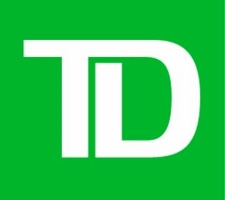@TDAM_Canada
Investor Knowledge + 5 Minutes = Current Insights
When it comes to investing in public equities, a key factor when evaluating a stock is the level and the future path, of profit margins or simply "margins". At the level of individual companies, the path of margins has major implications on the prospect for earnings growth and can drive major shifts in valuations if it is seen to be improving or deteriorating.
Investors also look at margins at a broader equity market level, by aggregating the outlook across a range of companies, to assist in making asset allocation decisions.
Margins - the past, present, and future
Looking back at where margins have been and where they are today is critical in helping to understanding where they headed. To help provide some insight into where margins may be headed, TD Asset Management Inc. (TDAM) recently published an article titled Getting to the bottom of – the bottom line that helps readers get a better understanding of the importance of margins and what factors can positively and negatively affect them moving forward.
Over the last three decades we have witnessed margins expand for the S&P 500 Index, driven by both operating gains (businesses have become more efficient in generating sales into profits), as well as non-operating gains (driven by lower taxes and interest costs). While margins have increased over the long run, they are typically pro-cyclical and move up and down with the economic cycle. This is driven by operating and financial leverage, to rising and declining sales. There have been five key drivers of higher margins over the last 30 years:
- A growing mix of S&P 500 profits being generated by the Technology sector
- Growth in corporate concentration across several industries,
- Globalization which has led to lower bargaining power of labour,
- Lower effective tax rates,
- Declining interest rates.
Will corporate margins continue to post gains in the years ahead?
There are both headwinds and tailwinds that can have an impact on margins in the years ahead. A few of the headwinds include:
- Higher bargaining power of labour,
- Higher normalized interest rates,
- Risk of higher corporate taxes,
- Headwinds from deglobalization & decarbonization.
There are tailwinds that support future margin expansion including continued growth of the Technology sector, in addition to the rise of artificial intelligence (AI) and robotics which can drive productivity gains across a range of sectors.
In a survey of Sector Analysts on TDAM's Fundamental Equities Team, the team believes that AI will be positive for 75% of the S&P 500. In addition, 59% of the S&P 500 is expected to see revenue tailwinds, and 60% of the S&P 500 is expected to post cost savings through the implementation of AI. Industries that are best positioned to benefit include Pharma & Biotech, Automotive, Semiconductors, Media, Software, Broadline Retailers.
Flat to modestly higher
All-in, over the next decade, margins are expected to be flat to modestly higher. Given the difficulty in forecasting the path of interest rates, corporate taxes, and the speed of AI adoption, the most sensible strategy for investors is to stick with a basket of high-quality companies. High quality companies, with pricing power, strong margins, strong free cash flow generation, and with the ability to reinvest cashflow into projects with attractive returns, are the most attractive. Firms with these qualities are ultimately best positioned to outperform, regardless of what the macro environment throws at them.
The information contained herein has been provided by TD Asset Management Inc. and is for information purposes only. The information has been drawn from sources believed to be reliable. The information does not provide financial, legal, tax or investment advice. Particular investment, tax, or trading strategies should be evaluated relative to each individual’s objectives and risk tolerance.
Certain statements in this document may contain forward-looking statements (“FLS”) that are predictive in nature and may include words such as “expects”, “anticipates”, “intends”, “believes”, “estimates” and similar forward-looking expressions or negative versions thereof. FLS are based on current expectations and projections about future general economic, political and relevant market factors, such as interest and foreign exchange rates, equity and capital markets, the general business environment, assuming no changes to tax or other laws or government regulation or catastrophic events. Expectations and projections about future events are inherently subject to risks and uncertainties, which may be unforeseeable. Such expectations and projections may be incorrect in the future. FLS are not guarantees of future performance. Actual events could differ materially from those expressed or implied in any FLS. A number of important factors including those factors set out above can contribute to these digressions. You should avoid placing any reliance on FLS.
The TD Wealth Asset Allocation Committee (WAAC) is comprised of a diverse group of TD investment professionals. The WAAC’s mandate is to issue quarterly market outlooks which provide its concise view of the upcoming market situation for the next six to eighteen months. The WAAC’s guidance is not a guarantee of future results and actual market events may differ materially from those set out expressly or by implication in the WAAC’s quarterly market outlook. The WAAC market outlook is not a substitute for investment advice.
TD Asset Management Inc. is a wholly-owned subsidiary of The Toronto-Dominion Bank.
®The TD logo and other TD trademarks are the property of The Toronto-Dominion Bank or its subsidiaries.
 Canada
Canada

